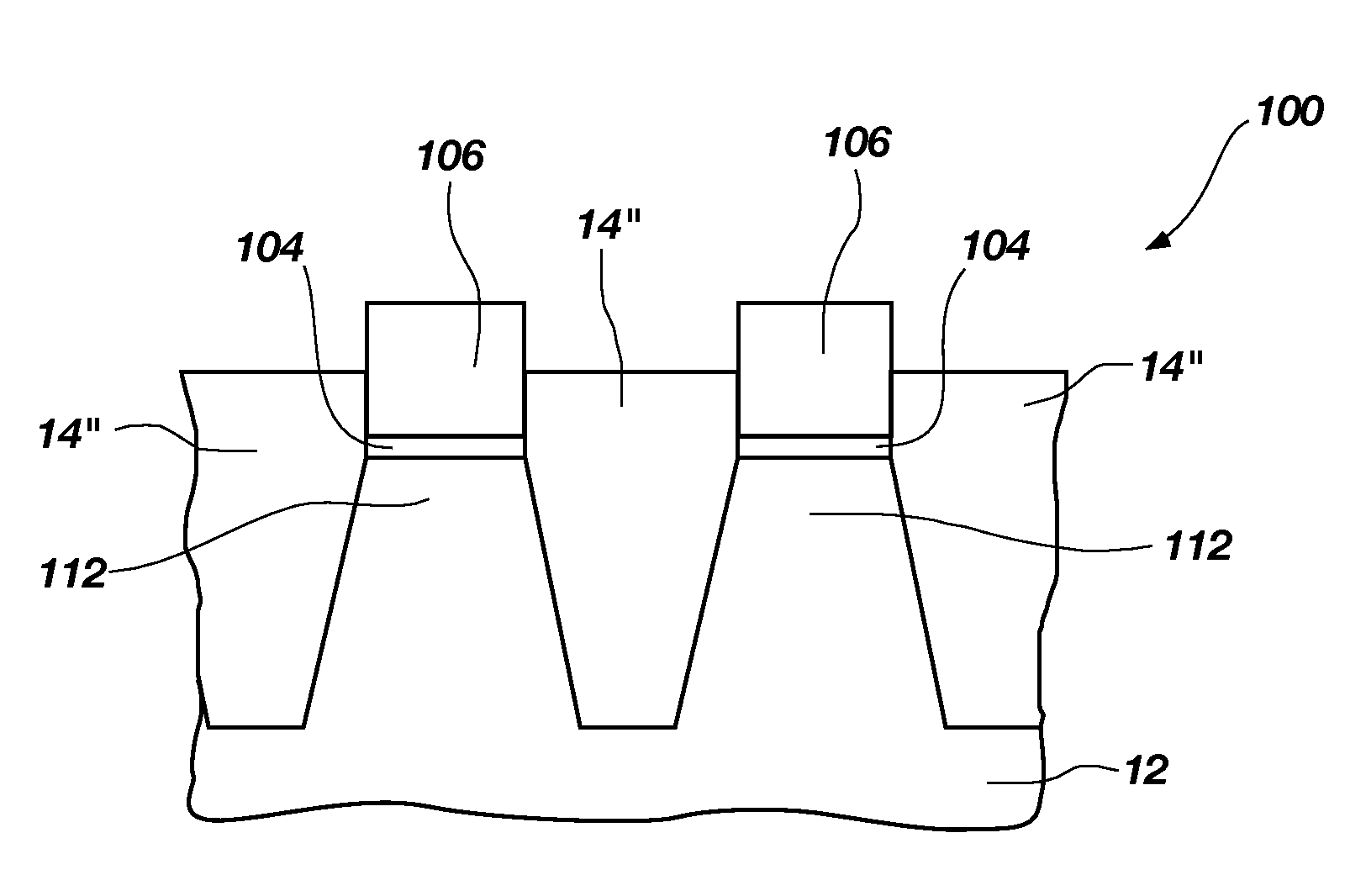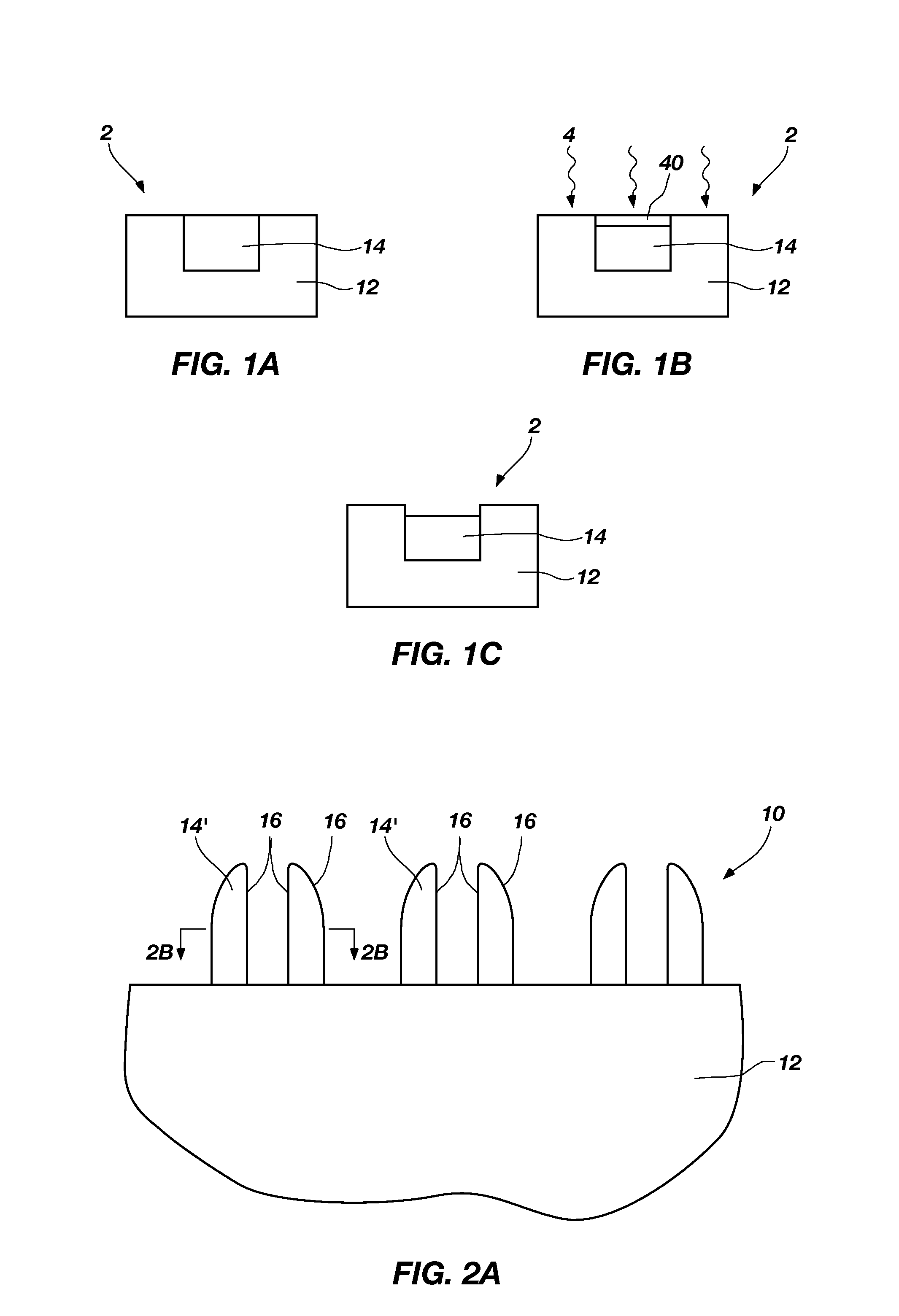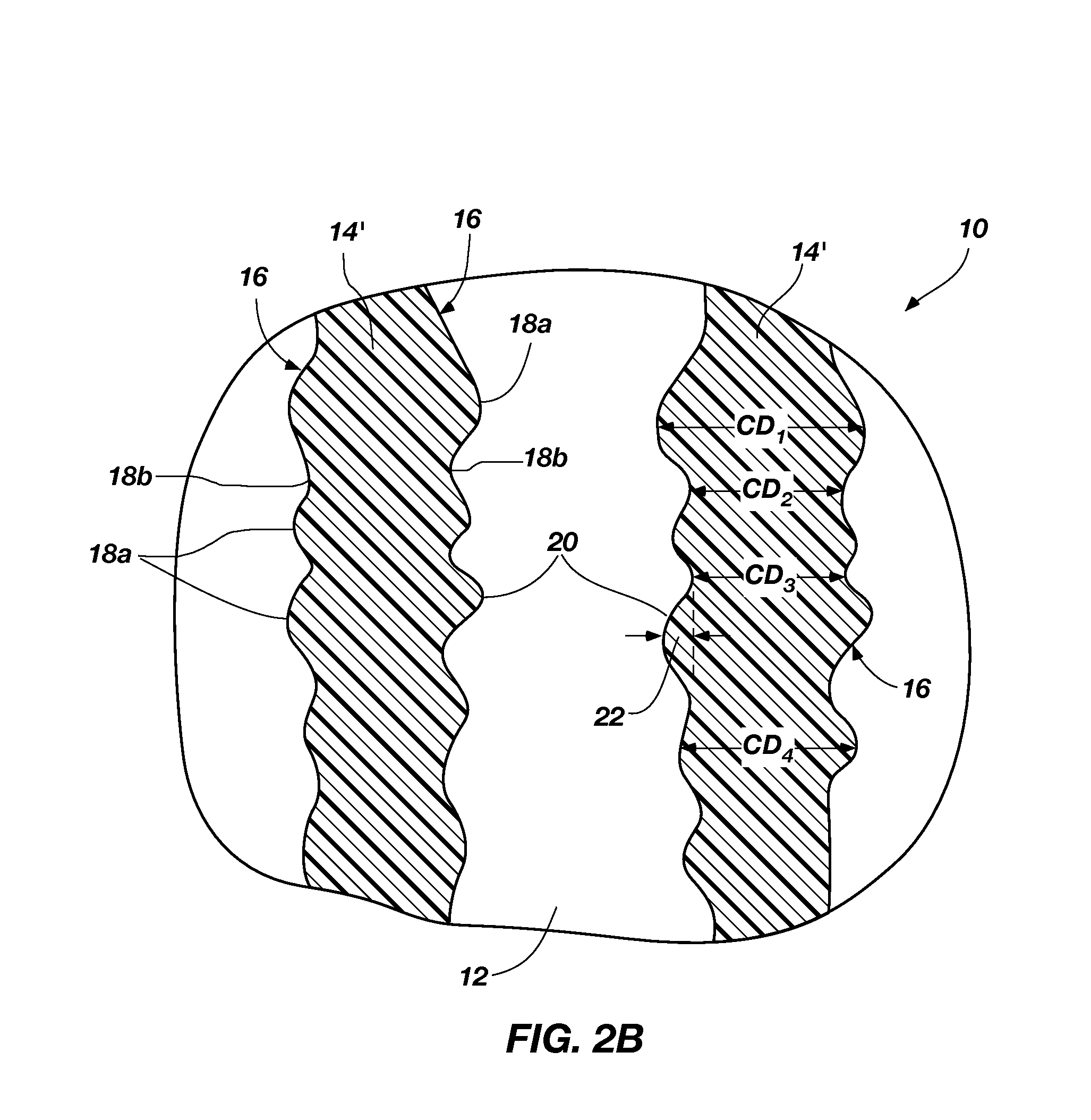Methods of removing silicon oxide and gaseous mixtures for achieving same
a gaseous mixture and silicon oxide technology, applied in the direction of decorative surface effects, electrical appliances, decorative arts, etc., can solve the problems of reducing the wafer throughput and adding time to the wafer fabrication process
- Summary
- Abstract
- Description
- Claims
- Application Information
AI Technical Summary
Problems solved by technology
Method used
Image
Examples
Embodiment Construction
[0011]A method of removing at least a portion of a silicon oxide material is disclosed. As shown in FIGS. 1A-1C, a semiconductor structure 2 including a substrate 12 and a silicon oxide 14 (“SiOx”) is provided. A surface of the silicon oxide 14 is exposed to an ammonium fluoride chemistry, forming a solid reaction product 40 on the surface of the silicon oxide 14. As described in more detail below, the ammonium fluoride chemistry includes a volatile amine and HF. The reaction of the volatile amine and HF with the silicon oxide 14 is referred to herein as “ammonium fluoride chemical treatment” to distinguish this reaction from the chemical treatment of the conventional COR / PHT process. The solid reaction product 40 and silicon oxide 14 are exposed to a plasma 4, producing volatile species that are easily removed from a processing chamber (not shown) in which the plasma 4 is produced. Subjecting the silicon oxide 14 and the solid reaction product 40 to the plasma 4 is referred to here...
PUM
| Property | Measurement | Unit |
|---|---|---|
| ion bombardment energy | aaaaa | aaaaa |
| ion bombardment energy | aaaaa | aaaaa |
| temperature | aaaaa | aaaaa |
Abstract
Description
Claims
Application Information
 Login to View More
Login to View More - R&D
- Intellectual Property
- Life Sciences
- Materials
- Tech Scout
- Unparalleled Data Quality
- Higher Quality Content
- 60% Fewer Hallucinations
Browse by: Latest US Patents, China's latest patents, Technical Efficacy Thesaurus, Application Domain, Technology Topic, Popular Technical Reports.
© 2025 PatSnap. All rights reserved.Legal|Privacy policy|Modern Slavery Act Transparency Statement|Sitemap|About US| Contact US: help@patsnap.com



